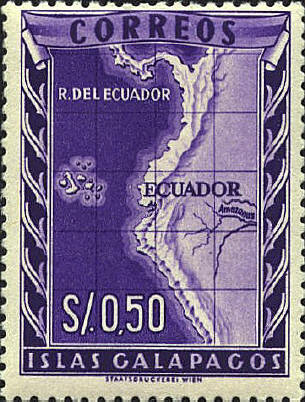|
Galapagos Islands
The Galápagos Islands were
discovered in 1535 by the Bishop of Panama, Fray Tomás de Berlanga.
There is a legend that the islands were visited earlier by Inca
voyagers, but the evidence for this is tenuous. In about 1570 the
islands first appeared on a map. Two maps date from this time, one
drawn by Abraham Ortelius and one by Mercator. The islands were called
"Insulae de los Galopegos -- Islands of the Tortoises."
Following his four years of isolation on Juan Fernandez
Island off the Chilean coast, Alexander Selkirk, Robinson Crusoe's
prototype, visited the Galápagos Islands around 1709 with the
privateer captain Woodes Rogers.
The first resident of the Galápagos was an Irishman
named Patrick Watkins. It is thought that he was marooned on Floreana
in 1807. He spent two years growing vegetables which he exchanged with
visiting whalers for rum. In 1809 he stole a whaling ship's long-boat
and escaped to Guayaquil.
The most famous visitor to the Galápagos was Charles
Darwin, aboard the HMS Beagle. Darwin visited only four islands (San
Cristóbal, Floreana, Isabela, and Santiago) during his five week stay,
but made extensive collections of plants and animals and observations
of their natural history.
The Galápagos were officially annexed by Ecuador in
1832 and were named "Archipiélago del Ecuador." The stamp was issued
in 1957 to celebrate the 125th anniversary of this event.


|
